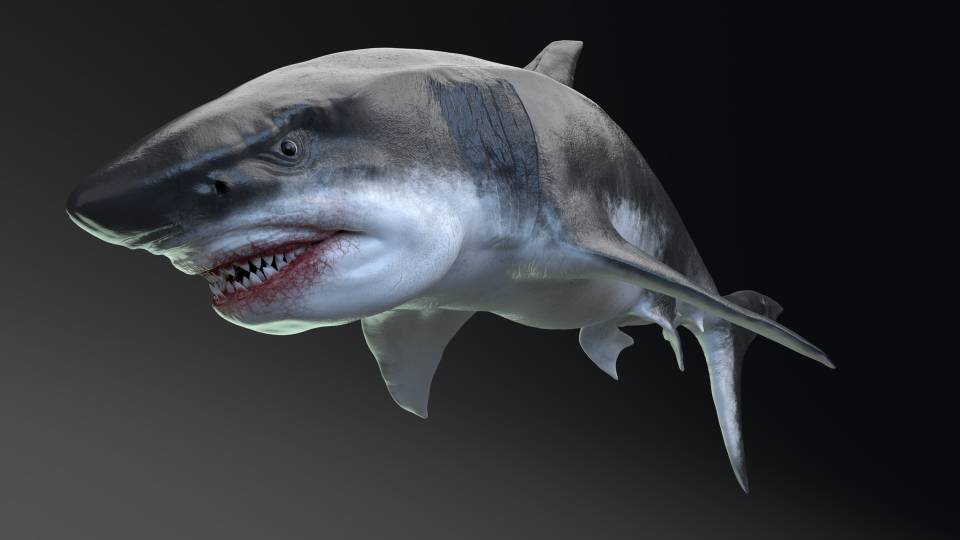Dinosaurs have gripped the popular imagination since the first fossilized skeleton was unearthed in New Jersey in the 19th century. However, the public has resisted accepting some theories put forth in recent decades, including evidence pointing to the similarities between dinosaurs and birds, said Jack Horner, paleontologist for the Museum of the Rockies at Montana State University.
Horner delivered the Louis Clark Vanuxem Lecture, entitled "Dinosaur Research in the 21st Century," to a packed house at McCosh 50 on March 24. The audience included dozens of elementary-school-aged children, some of whom displayed a remarkable knowledge of paleontology during the question and answer period.
"If you adults have any problem following what I am saying, ask a kid," Horner quipped.
Horner is well known among paleontologists for his highly unorthodox contention that the ferocious-appearing Tyrannosaurus rex was actually a scavenger and not a predator. He is equally well known among the lay public for his role as technical adviser to producer Steven Spielberg for the "Jurassic Park" movie series.
For decades following the first attempts to piece together dinosaur skeletons, the creatures were erroneously viewed as cold-blooded reptiles that, inexplicably, dragged their tails as they moved about the landscape, Horner said. That view was upended in 1964 when Dr. John Ostrom, now professor emeritus of geology and geophysics at Yale University, revealed the similarities between modern birds and dinosaurs.
In the years since, researchers have listed more than 100 common characteristics between birds and dinosaurs, Horner said.
"There are still people who dispute whether dinosaurs and birds are related. I call them the 'flat-Earthers,'" Horner said. "Dinosaurs are birds, and the world is round."
During his career, Horner has unearthed dinosaur eggs, juvenile dinosaurs and evidence that dinosaurs brooded on their nest to keep the eggs warm. He also has found evidence suggesting that some dinosaurs nested in colonies and that dinosaurs grew with amazing speed, in the case of one species from a length of 16 inches at birth to 35 feet in seven years.
He also has amassed substantial evidence that T. rex was much more like a vulture than a hawk, but the world may not be ready to listen.
"That's pretty contentious," Horner said. "I got hate mail from sixth graders. There is nobody in the world who wants to believe T. rex is a scavenger, so I'm staying away from the whole business."
Paleontology remains very much a field science, Horner said, with a new classification discovered somewhere worldwide about every seven weeks, on average. Still, the discipline has evolved to a new stage where dinosaurs are studied as animals, albeit animals extinct for 65 million years. The future of the science, Horner said, increasingly will be in the laboratory, where answers will be sought to seemingly impossible questions such as what the colors of dinosaurs or the sounds they made were.
"We are doing molecular paleontology, and we are able to do so much more than ever before," he said. "With CT (computed tomography) scanners, we are now seeing embryos and eggs."
The Vanuxem lectures were founded in 1912 with a bequest of $25,000 under the will of Louis Clark Vanuxem of the Class of 1879 for public lectures annually on subjects of scientific interest. Past lecturers have included Edwin P. Hubble, Thomas Mann, Ralph Ellison and Carl Sagan.
Contact: Evelyn Tu (609) 258-3601



